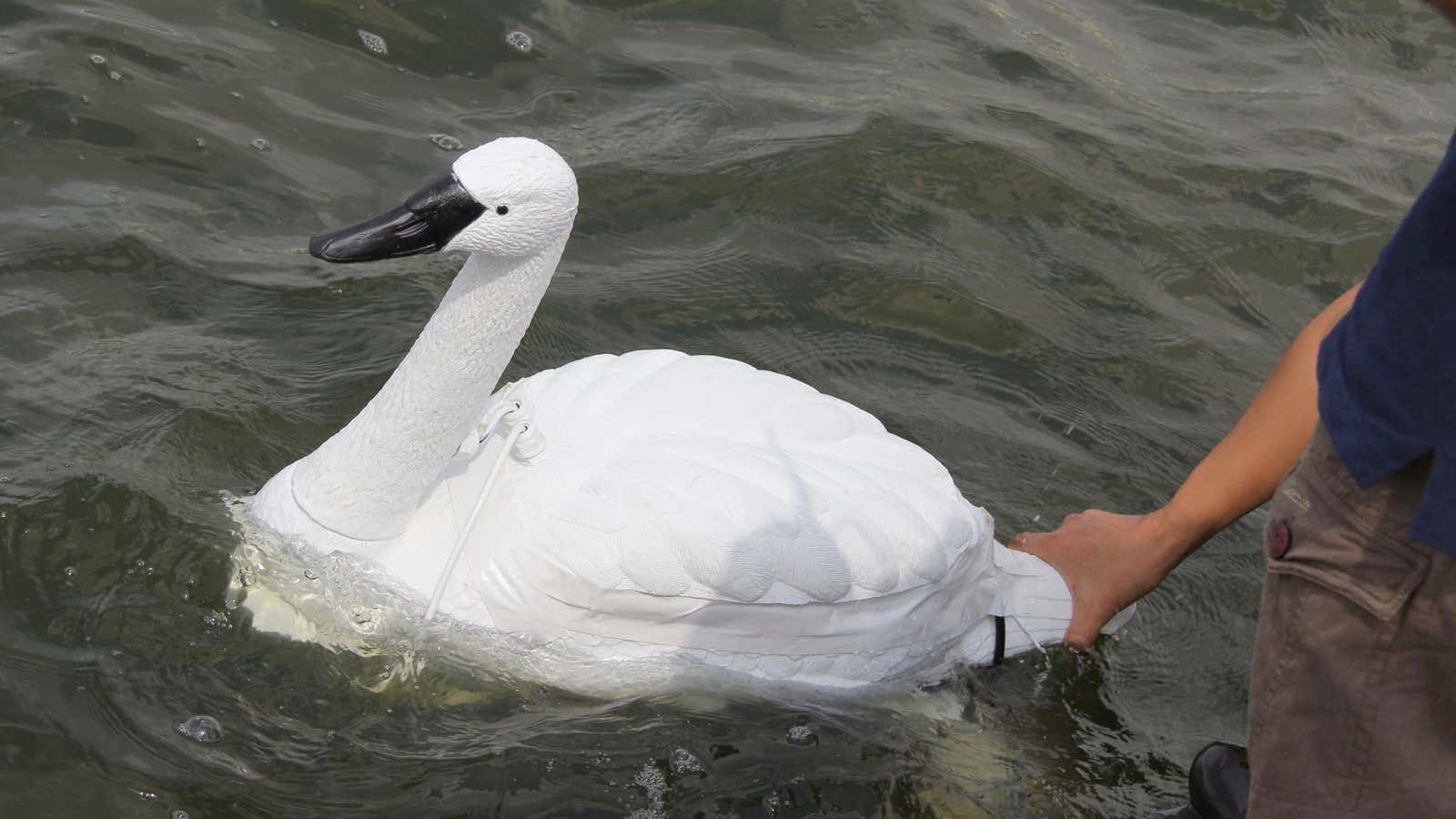To test the water quality in a reservoir, workers typically take a boat around to collect samples. But that’s a painfully slow way to collect data, especially if there’s a sudden outbreak or contamination.
A team in Singapore is working on an alternative approach: GPS-guided robots that take measurements and wirelessly transmit results back to researchers—and look like swans to blend in with the environment.
Called NUSwan, the project is led by researchers at the Environmental Research Institute and the Tropical Marine Science Institute, both part of the National University of Singapore.

They have been testing the propellor-driven robots in Singapore’s Pandan Reservoir, which is already popular among remote-controlled-boat hobbyists:
Researchers can remote control a swan like toy boat, but the idea is to program it with some instructions and then let it wander around, testing on its own. GPS can help ensure a robot doesn’t check the same area over and over again.
The robots’ design allows for various kinds of sensors. Researchers can set it up to measure physical parameters, such as pH or the turbidity of water, or biological ones, such as chlorophyll. The team hopes to add a sensor for phosphates, which can cause algae blooms. Such blooms often kill large numbers of fish, as happened last year in the Lake Erie in Ohio.
Interest in the robot swans has come from other nations, including China, where water pollution is a more pressing issue than in highly managed Singapore.
